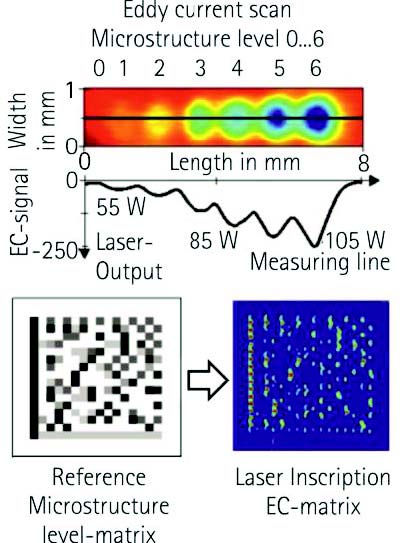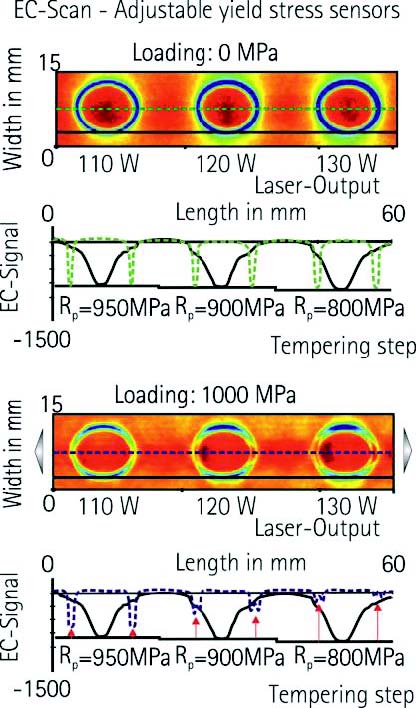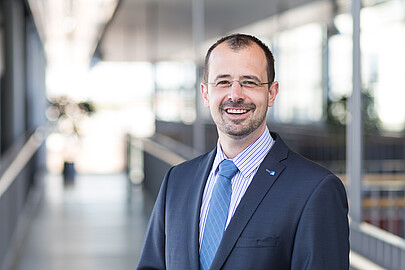Load measurement and data storage within the subsurface region of a component
The motivation for subproject S3 is derived from current problems in the areas of component identification and integrity evaluation, particularly for highly stressed components. In the field of component evaluation, missing component markings can lead to assignment problems and delays in operational process. Whereas in the area of integrity evaluation component failure in spite of regular maintenance can lead to malfunctions of machinery and installations. Modern methods of inherent marking and a quick non-destructive readout of the load history offer a prospect of secure identification and status evaluation of components, and, therefore reduce failure costs.
Oriented towards a broad field of applications for marking and storing data in steel and light metal material components, a laser technology was developed for the local heat treatment. With this technology, point wise defined microstructural states can be specifically set via tempering, hardening and dispersing in the component's subsurface region, Figure 1. The 3D-Data brought in by multistage microstructural changes can be read out by use of high resolution eddy current array technology, harmonic analysis of eddy current signals or induction thermography. With this new method for part identification, components get a solid marking and a high piracy protection.



With regard to recording and assessing early elevated component loading and loading drops, a sensor design was developed which significantly surpasses the level of known monitoring technologies. This design is based on globally cold working metastable austenitic materials and locally heat treatment of the formed martensite. Thus, yield stress values are specifically set in restricted regions of the material in order to recognise a defined overload early. Moreover it can be saved inherent and component failure as a consequence of overloading can be avoided. An eddy current sensor array and analyse technology was developed for recording and evaluating the component's endured loading history, subject to multiaxial loads, as a function of the loading and number of load reversals, Figure 2.



In the 3rd phase of the application and corresponding to the structure of the CRC 653 it is intended to qualify the developed technology for storing component inherent information, loading sensors and analytical techniques for collecting and characterising the local information in the subsurface region as well as integrating this into gentelligent components of demonstration systems
Subproject leader


30823 Garbsen




An der Universität 2
30823 Garbsen


An der Universität 2
30823 Garbsen


